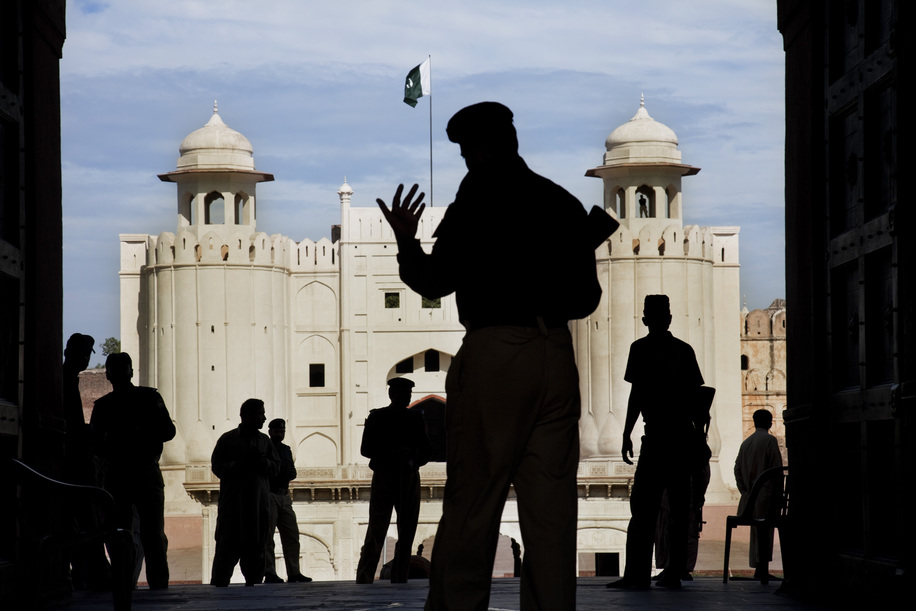

Armed guards stand watch during Friday prayers at the Badshahi Mosque, the second largest mosque in Pakistan and South Asia and the fifth largest mosque in the world. It is Lahore's most famous landmark and a major tourist attraction epitomizing the beauty, passion, and grandeur of the Mughal era.
Punjab
Organization: VII Photo
Photographer: Ed Kashi
Organization: VII Photo
Exhibit Title: Punjab
Location: Pakistan
Straddling India and Pakistan, the Greater Punjab region covers almost 98,000 square miles. In 1947’s Partition, an arbitrary border splitting Punjab gave birth to predominantly Muslim Pakistan and Hindu India and was the site of recorded history’s greatest forced migration amid bloody atrocities. Despite these horrors, Punjabis have demonstrated a kinship that defies artificial borders, and no other regions of these two countries share such close historical connections.
As Pakistan’s wealthiest, most populous province, the Punjab is a bellwether for the country’s fortunes as it confronts growing Taliban insurgency. Reflecting Pakistan’s split personality - modern, developed, moderate versus violent, intolerant, backward - the region represents a unique prism to examine these dynamics at a time of pressing worldwide significance. The Punjab provides both a symbolic and practical access point for India and Pakistan to heal their troubled relationship through the people’s everyday experiences and interests - to find common ground.
These images were part of the July 2010, National Geographic Magazine story "Pakistan's Heartland Under Threat".
studio@edkashi.com
VII Photo www.viiphoto.com/feature.html
Make Comment/View Comments